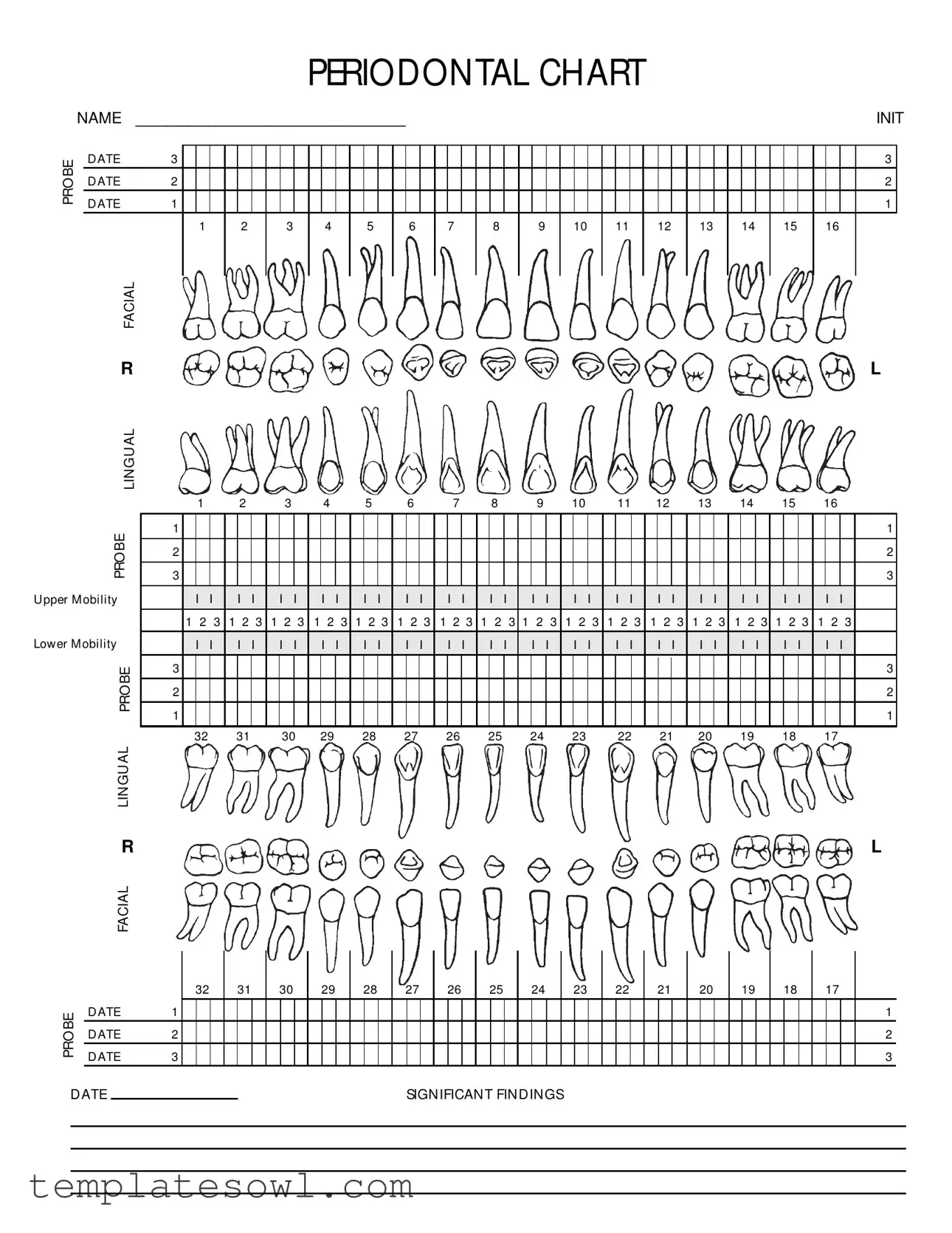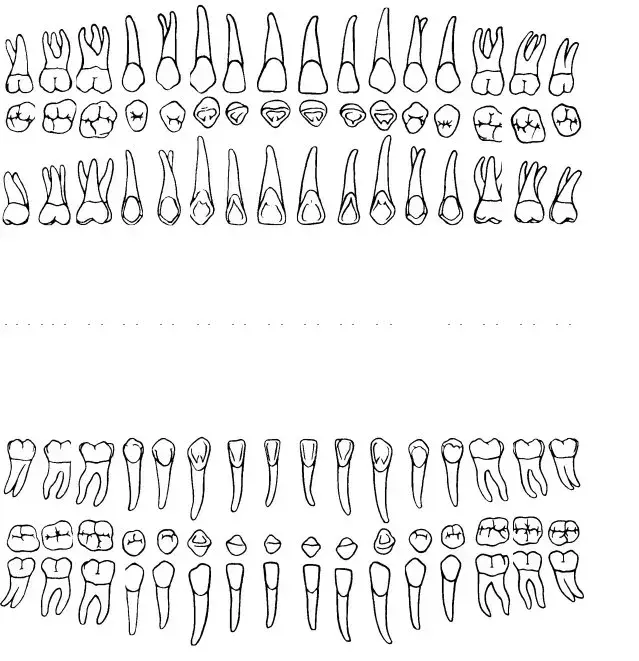What is a Perio Chart?
A Perio Chart, or periodontal chart, is a form used by dental professionals to assess the health of a patient's gums and supporting structures. It records various measurements that help identify issues such as gum disease or attachment loss, guiding treatment decisions.
What information is included in the Perio Chart form?
The Perio Chart form includes the patient's name, file number, date, and multiple diagnostic indicators. These indicators note information such as clinical attachment loss (CAL), bleeding on probing (BOP), probing depths (PD), and the presence of plaque and calculus (Calc). Additionally, it records the gingival margin (GM) and mobility of teeth.
How is the Perio Chart completed?
Dentists or hygienists complete the Perio Chart during a dental examination. They use a periodontal probe to measure the depth of the gum pockets around each tooth. This information is then recorded on the chart, allowing for an organized evaluation of periodontal health.
Why is it important to assess bleeding on probing (BOP)?
Bleeding on probing is a crucial indicator of gum health. If bleeding occurs during probing, it often suggests inflammation or gum disease. Tracking BOP helps professionals diagnose periodontal conditions and determine appropriate treatment strategies.
What do the terms CAL and PD mean?
CAL, or clinical attachment loss, measures the amount of gum tissue that has detached from the tooth. PD, or probing depth, indicates how deep the gum pockets are around each tooth. Both measurements are essential in determining the severity of periodontal disease and guiding the treatment plan.
How often should a Perio Chart be updated?
The Perio Chart should be updated regularly, typically during routine dental check-ups or as part of the treatment process for periodontal disease. Frequent updates ensure that any changes in gum health are monitored and addressed promptly.
What is the significance of the Plaque Index (PI)?
The Plaque Index (PI) assesses the presence of plaque on teeth. The presence of plaque is a significant factor in periodontal disease development. By recording the PI, dental professionals can evaluate oral hygiene practices and suggest improvements when necessary.
What do the terms "Mobility" and "CEJ" refer to on the chart?
Mobility indicates whether a tooth is loose. The assessment is based on how much movement is observed when pressure is applied. CEJ stands for cementoenamel junction. It is the point where the enamel covering the tooth meets the cementum, which is the outer layer of the root of the tooth. This junction is important for measuring attachment loss accurately.
What is the role of the Supervisor's Signature on the form?
The Supervisor's Signature indicates that the assessment and findings on the Perio Chart have been reviewed and approved by a qualified professional. This step is vital for ensuring that accurate records are maintained and that proper care protocols are followed.
Can the Perio Chart help in treatment planning?
Yes, the Perio Chart is instrumental in treatment planning. By providing a comprehensive overview of a patient’s periodontal health, it helps dental professionals design individualized treatment plans that address specific issues, improve oral health, and prevent further complications.

